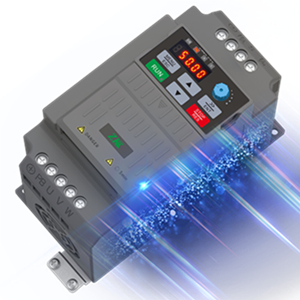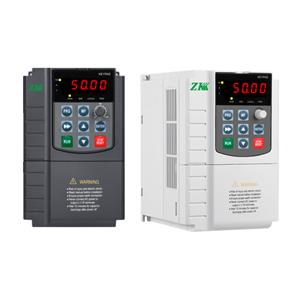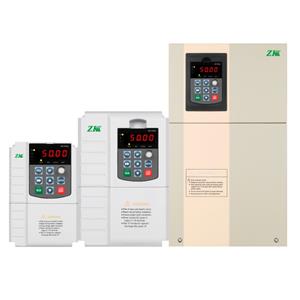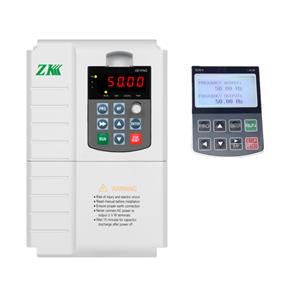Best Practices for Optimizing Cooling Systems in VFD
Variable Frequency Drives (VFDs) have become pivotal in modern industrial applications, providing precise motor control, significant energy savings, and enhanced operational efficiency. However, the inherent heat generated during Variable Frequency Drives operation—resulting from power losses in semiconductors, circuit boards, and switching components—poses a critical challenge. Proper cooling system design is essential to ensure the reliability, efficiency, and longevity of Variable Frequency Drives, preventing thermal stress and premature failure. This article provides an in-depth guide to best practices in designing cooling systems tailored to Variable Frequency Drives.
The Role of Cooling in Variable Frequency Drives Functionality
Efficient thermal management is vital for maintaining optimal performance and safeguarding the longevity of Variable Frequency Drives. The major sources of heat within Variable Frequency Drives include:
Semiconductor Switching Losses: Key power devices, such as insulated-gate bipolar transistors (IGBTs) and diodes, generate heat during conduction and rapid switching events.
Power Module Losses: Passive components like capacitors and inductors contribute to heat generation due to electrical resistance and electromagnetic effects.
Excessive heat can lead to various complications, including reduced performance, component degradation, thermal runaway, and increased downtime due to system failure. A well-engineered cooling system ensures safe operating temperatures, compliance with energy efficiency standards, and adherence to regulatory requirements such as UL, CE, and ISO certifications.
Essential Cooling System Design Practices
Incorporate Thermal Analysis Early in Design
The foundation of effective cooling starts during the design phase, where thermal analysis tools such as Computational Fluid Dynamics (CFD) or Finite Element Analysis (FEA) help engineers identify thermal hotspots and define strategies for heat dispersion. Early thermal modeling enables precise placement of heat-generating components and optimizes cooling system integration.
Select the Appropriate Cooling Method
Matching the cooling method to the specific application, environmental conditions, and power rating is crucial. Common cooling approaches include:
Air Cooling: Suitable for low-power Variable Frequency Drives or environments with moderate ambient temperatures, air cooling employs natural convection or forced air via fans to dissipate heat. Effective design of airflow pathways and vents enhances heat transfer efficiency.
Liquid Cooling: Preferred for high-power Variable Frequency Drives or demanding environments, liquid cooling systems use water or specialized coolants to transfer heat effectively. These systems provide superior performance in compact spaces but require maintenance to prevent issues such as leaks.
Thermal Management Materials: Advanced materials, such as thermal pads, phase-change materials (PCMs), and high-performance heat sinks, improve heat conduction and dissipation. These materials are ideal for complementing other cooling mechanisms.
Optimize Heat Sink Design
Heat sinks are a critical element in heat dissipation. Selecting high thermal conductivity materials like copper or aluminum and optimizing factors such as fin geometry, spacing, and surface area significantly improve cooling performance. Lightweight designs are particularly advantageous for applications with weight or space constraints.
Enhance Airflow Management
For air-cooled Variable Frequency Drives, proper airflow is paramount for uniform cooling. Strategic placement of intake and exhaust vents ensures maximum heat removal and prevents localized overheating. Avoiding obstructions and ensuring adequate spacing between components further boosts airflow efficiency.
Integrate Temperature Monitoring Systems
Incorporating temperature sensors enables real-time thermal management. By monitoring conditions near critical components, sensors can alert users to abnormal temperature increases, facilitating timely corrective actions such as load reduction or emergency shutdowns.
Account for Environmental Conditions
Environmental factors, including ambient temperature, humidity, and the presence of dust or corrosive substances, must be factored into the cooling system design. Robust enclosures with appropriate ingress protection ratings (e.g., IP54, IP65) safeguard Variable Frequency Drives in harsh operating environments. Cooling solutions must be durable enough to withstand field conditions without compromising reliability.
Prioritize Energy Efficiency
Cooling systems themselves consume energy, impacting overall operational costs. High-efficiency cooling components, such as variable-speed fans and smart coolant pumps, adjust cooling performance based on real-time thermal loads, minimizing energy waste and enhancing system sustainability.
Design Challenges and Considerations
Despite adherence to best practices, engineers often face challenges in cooling system design for Variable Frequency Drives. Common issues include balancing cost and performance, addressing noise concerns for air-cooled systems, and mitigating risks such as coolant leakage in liquid-cooled setups. Additionally, regulatory constraints and customer-specific requirements may impose design limitations.
Effective cooling system design is a cornerstone of reliable, efficient, and long-lasting Variable Frequency Drives, enabling them to operate safely under varying industrial conditions. By applying these best practices—early thermal analysis, strategic cooling method selection, heat sink optimization, airflow management, environmental adaptation, and real-time temperature monitoring—engineers can develop robust thermal solutions tailored to diverse applications.
As industries increasingly adopt energy-efficient and intelligent systems, advancements in Variable Frequency Drives cooling technologies will play a pivotal role in shaping the future. Cutting-edge tools, such as AI-driven cooling controls and next-generation thermal materials, promise enhanced reliability and efficiency, ultimately supporting cleaner and more sustainable industrial processes. By prioritizing innovative and sustainable cooling strategies, engineers can ensure optimal Variable Frequency Drives performance while contributing to broader environmental goals.




